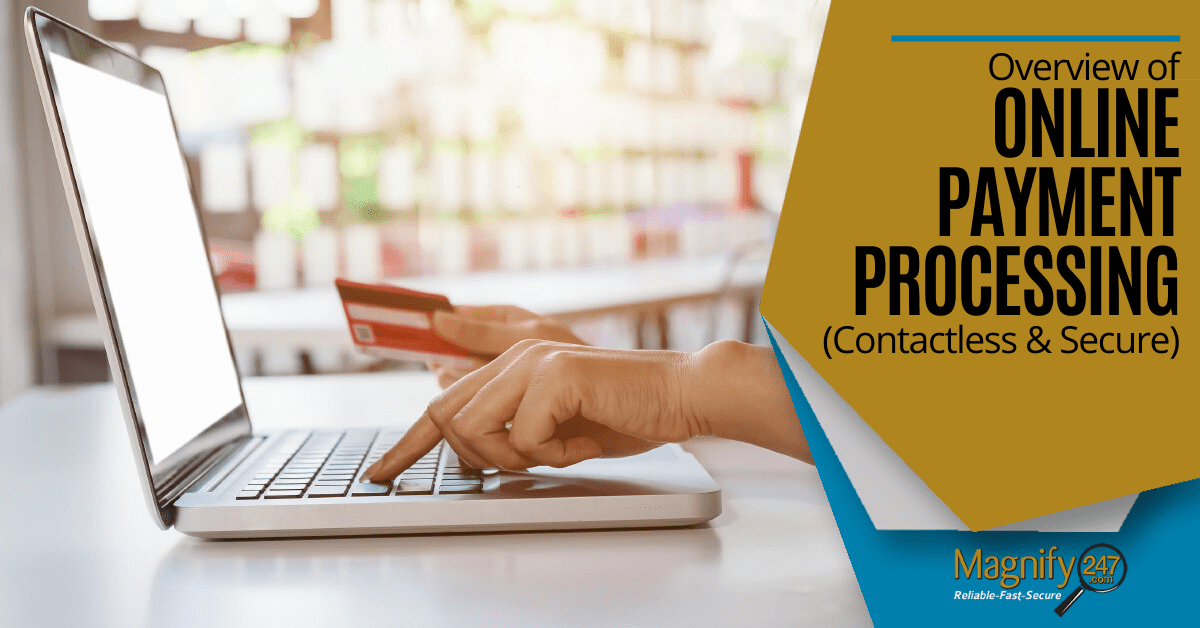
How do you add online payment processing to your website or offer contact-free payments onsite? This is a common question that Indiana businesses often ask.
watch the short video > https://youtu.be/rJdJpOeiTs8
Whether you sell a product or service, giving customers the ability to order or pay for your service online can improve your sales and the convenience for your customer.
51% of Americans prefer shopping online to shopping in a store.
But setting up online payment processing can be tricky if you’re trying to do it yourself. Besides getting all the connections to work correctly (payment processing, shipping calculation, etc.) it also has to be done securely so customers will trust it.
You also want to ensure the way you handle online payment processing is convenient to customers. Many of them are also looking for contactless ways to pay in person due to COVID-19 and want the entire process to be quick and easy.
We don’t charge you extra for the convenience of fixing your PC remotely. You pour yourself a coffee and let us solve those really annoying and complicated tech problems for you, just sit back and relax. We deal with all the hassle.
That’s just what your customers are looking for from you… hassle-free purchases!
In this article, we’ll go through the basic components for setting up online ecommerce and we’ll look at the features offered by three top payment processors.
What Do I Need to Take Payments on My Website?
Today’s “plug-and-play” websites make it a bit easier to offer online ordering, but there are still a few different components that you need to put together to make the entire system work.
HTTPS (Security Certificate)
To ensure payments are made securely, and inspire confidence with customers, your website should have a security certificate. This will turn the “http” into “https.” This ensures that any data transmitted over the site (like payment details) will be encrypted for security.
Shopping Cart Plugin (Like WooCommerce)
To add shopping cart functionality to your website, you need to have a plugin (if you’re using a platform like WordPress) that will handle the back end of adding things to a cart, providing a checkout process, etc.
WooCommerce is one of the best known and most popular plugins for ecommerce.
Payment Processing Plugin
You’ll need to have a merchant account and one that has a compatible plugin with WooCommerce. This allows your shopping cart to take the order details and send them directly to the payment processor who will take the payment. (We’ll go over payment processors in the next section.)
Shipping Calculator Plugin
If you are selling products that need to ship out and you don’t want to just charge a flat rate for shipping, you need to have an accurate shipping calculator plugin. You can find them for UPS, FedEx and other popular services that will calculate the shipping and add it to a customer’s order.
Comparing PayPal, Stripe & Square for Payment Processing
Let’s take a look at three of the most popular payment processing solutions. We’ll focus on both their convenience and security features for clients.
All three of these have a WordPress plugin and can be used with WooCommerce and other shopping plugins.
PayPal
Most people are very familiar with PayPal and they like the fact that they don’t have to enter their credit card details directly into a website to use it.
PayPal offers a certain level of security due to that fact that others don’t, which is why it’s one of the most trusted payment methods by consumers.
Where PayPal falls short is for in person payment processing. While it can be used through apps like Google Pay, the function is somewhat cumbersome and not very convenient.
Stripe
Another popular online payment processor is Stripe. The signup process is quick and easy, and merchants tend to like how they handle payouts (they don’t hold them like some services do during a trial period).
Stripe notes that it has been audited by a PCI-certified auditor and is certified to PCI Service Provider Level 1, which is the most stringent level of certification.
Stripe has developer integrations that allow you to make payments more convenient, but they do have to be built-out, for example, into an app. You can accept Google Pay and Apple Pay through your Stripe account making it more convenient for customers.
Square
The third popular payment processor in our review is Square. When the service first began, it quickly made a name because of its convenience and how it integrates POS tools with online ecommerce.
Square notes that it is on the PCI Board of Advisors and is involved in the ongoing development of PCI Security Standards. It states that the company heavily invests in the security of its platform.
Square wins over the other two for POS convenience, it offers multiple devices that you can use with customers (one that even plugs into a mobile device) that can be used for easy contactless payments. They also don’t require you to build out the code yourself, they’re just “plug in and go.”
Ensure Your Network Is Securely Transmitting Your Payments
Magnify247.com can help your Central Indiana business ensure you don’t have any data leakage through your network and that customer payment information is kept completely secure.






